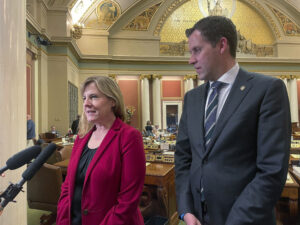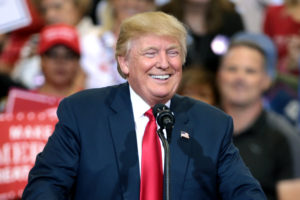Can the Left Stage a Tea Party?
This week, progressives will highlight a new effort to pursue the road not taken at a conference convened by the Campaign for America's Future that opens Monday.
Why hasn’t there been a tea party on the left? And can President Obama and the American left develop a functional relationship?
That those two questions are not asked very often is a sign of how much of the nation’s political energy has been monopolized by the right from the beginning of Obama’s term. This has skewed media coverage of almost every issue, created the impression that the president is far more liberal than he is, and turned the nation’s agenda away from progressive reform.
A quiet left has also been very bad for political moderates. The entire political agenda has shifted far to the right because the tea party and extremely conservative ideas have earned so much attention. The political center doesn’t stand a chance unless there is something like a fair fight between the right and the left.
It’s not surprising that Obama’s election unleashed a conservative backlash. Ironically, disillusionment with George W. Bush’s presidency had pushed Republican politics right, not left. Given the public’s negative verdict on Bush, conservatives shrewdly argued that his failures were caused by his lack of fealty to conservative doctrine. He was cast as a big spender (even if a large chunk of the largesse went to Iraq). He was called too liberal on immigration and a big government guy for bailing out the banks, using federal power to reform the schools, and championing a Medicare prescription drug benefit.
Conservative funders realized that pumping up the tea party movement was the most efficient way to build opposition to Obama’s initiatives. And the media became infatuated with the tea party in the summer of 2009, covering its disruptions of congressional town halls with an enthusiasm not visible this summer when many Republicans faced tough questions from their more progressive constituents.
Obama’s victory, in the meantime, partly demobilized the left. With Democrats in control of the White House and both houses of Congress, stepped-up organizing didn’t seem quite so urgent.
The administration was complicit in this, viewing the left’s primary role as supporting whatever the president believed needed to be done. Dissent was discouraged as counterproductive.
This was not entirely foolish. Facing ferocious resistance from the right, Obama needed all the friends he could get. He feared that left-wing criticism would meld in the public mind with right-wing criticism and weaken him overall.
But the absence of a strong, organized left made it easier for conservatives to label Obama himself as a left-winger. His health care reform is remarkably conservative — yes, it did build on the ideas implemented in Massachusetts that Mitt Romney once bragged about. It was nothing close to the single-payer plan the left always preferred. His stimulus proposal was too small, not too large. His new Wall Street regulations were a long way from a complete overhaul of American capitalism. Yet Republicans swept the 2010 elections because they painted Obama and the Democrats as being far to the left of their actual achievements.
This week, progressives will highlight a new effort to pursue the road not taken at a conference convened by the Campaign for America’s Future that opens Monday. It is a cooperative venture with a large number of other organizations, notably the American Dream Movement led by Van Jones, a former Obama administration official who wants to show the country what a truly progressive agenda around jobs, health care and equality would look like. Jones freely acknowledges that “we can learn many important lessons from the recent achievements of the libertarian, populist right,” and says of the progressive left: “This is our ‘tea party’ moment — in a positive sense.”
What’s been missing in the Obama presidency is the productive interaction with outside groups that Franklin Roosevelt enjoyed with the labor movement and Lyndon B. Johnson with the civil rights movement. Both pushed FDR and LBJ in more progressive directions while also lending them support against their conservative adversaries.
The question for the left now, says Robert Borosage of the Campaign for America’s Future, is whether progressives can “establish independence and momentum” while also being able “to make a strategic voting choice.” The idea is not to pretend that Obama is as progressive as his core supporters want him to be, but to rally support to him nonetheless as the man standing between the country and the right wing.
A real left could usefully instruct Americans as to just how moderate the president they elected in 2008 is — and how far to the right conservatives have strayed.
E.J. Dionne’s e-mail address is ejdionne(at)washpost.com.
© 2011, Washington Post Writers Group
Your support matters…Independent journalism is under threat and overshadowed by heavily funded mainstream media.
You can help level the playing field. Become a member.
Your tax-deductible contribution keeps us digging beneath the headlines to give you thought-provoking, investigative reporting and analysis that unearths what's really happening- without compromise.
Give today to support our courageous, independent journalists.






You need to be a supporter to comment.
There are currently no responses to this article.
Be the first to respond.